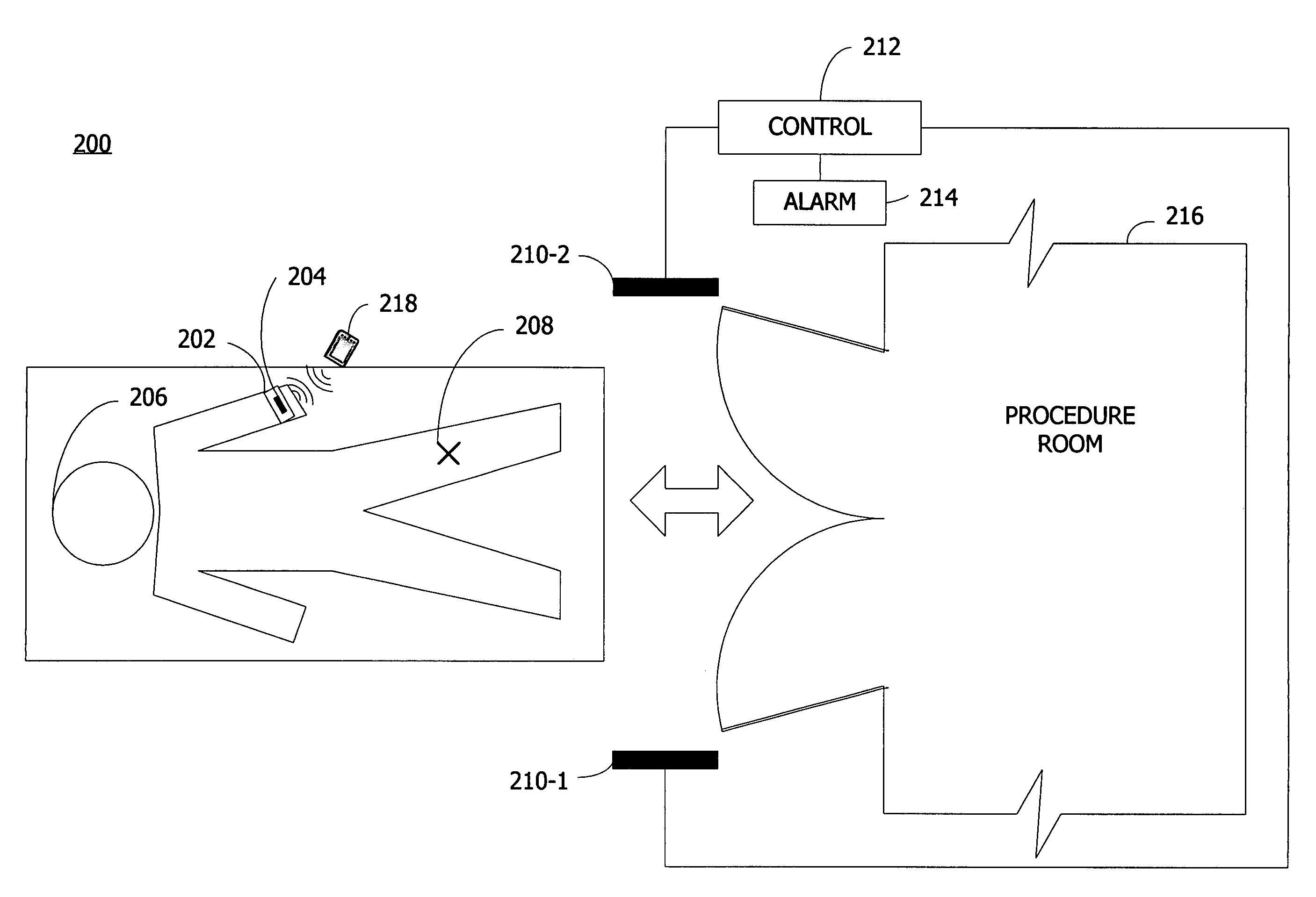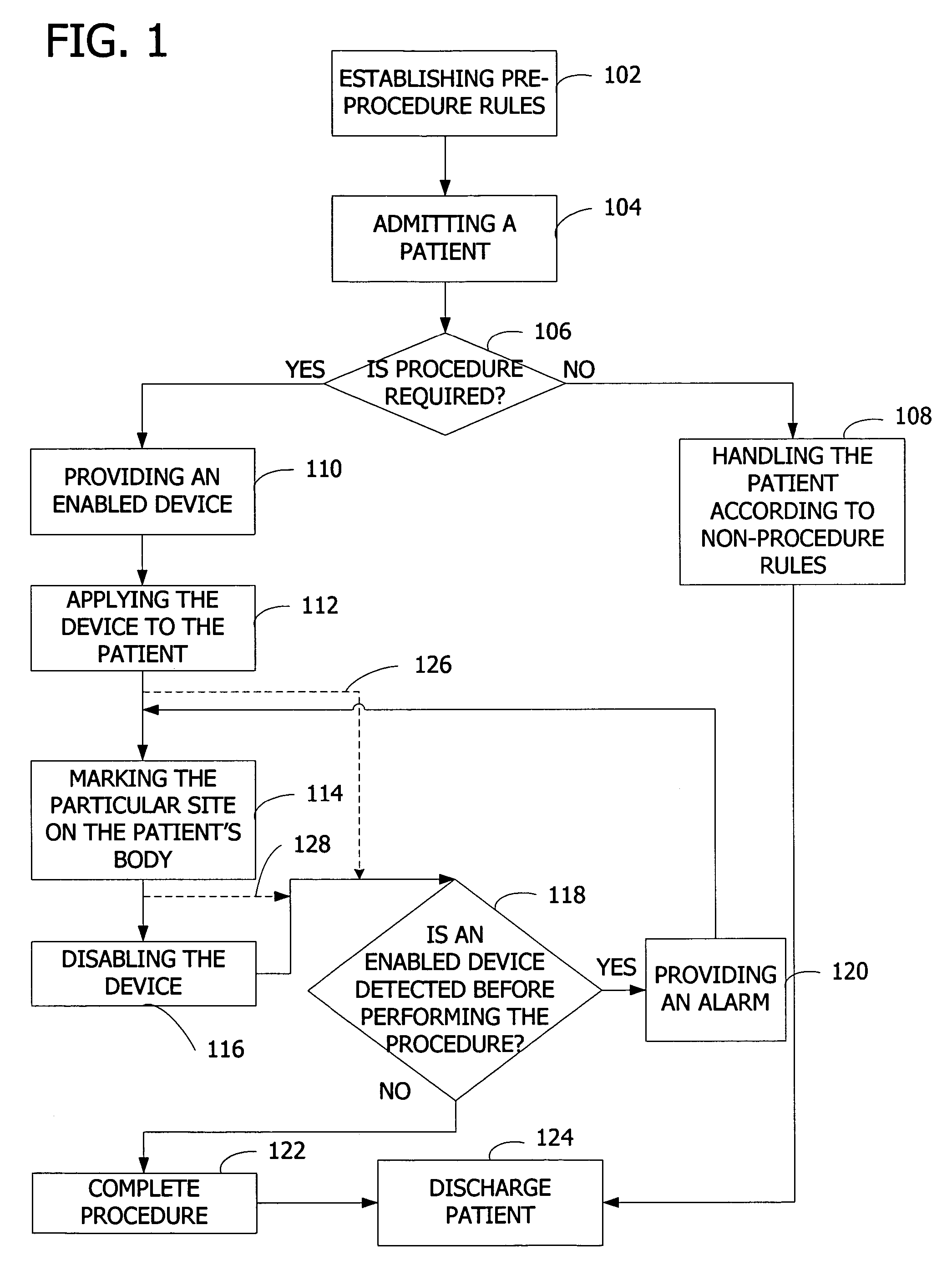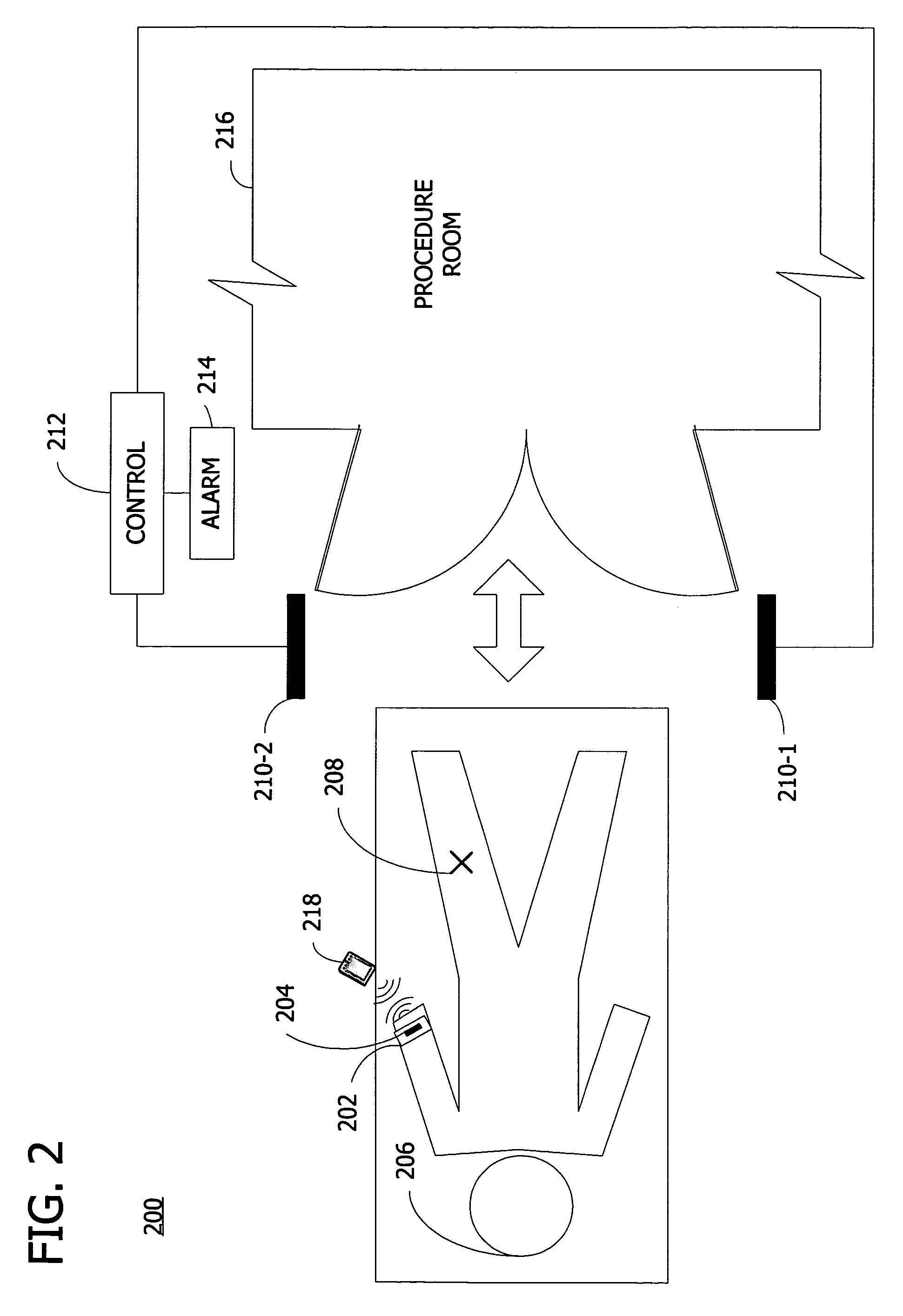Patient identification system and method for preventing wrong site procedure
a patient identification and wrong site technology, applied in the field of patient identification system, can solve the problems of increasing the risk that a surgeon may perform a wrong site procedure, affecting the safety of patients, and sometimes failing to mark the procedure site or request, so as to prevent the procedure
- Summary
- Abstract
- Description
- Claims
- Application Information
AI Technical Summary
Benefits of technology
Problems solved by technology
Method used
Image
Examples
Embodiment Construction
[0018]Referring now to the drawings, FIG. 1 is a flow chart illustrating an embodiment of a method according to the invention for assisting in preventing wrong site procedures, such as surgeries, and FIG. 2 is a block diagram illustrating an embodiment of a system according to the invention for monitoring that a procedure is being performed at a particular site.
[0019]Facilities, such as hospitals, clinics or specialized medical facilities, frequently establish a set of rules relating to proper handling of patients, such as a patient 206. For example, such a set of rules may include a set of pre-procedure rules, rules for admitting patients, rules for discharging patients, and / or a set of non-procedure rules. By way of example and not limitation, a procedure covered by these rules may be any invasive procedure, such as a surgery or an operation on an anatomic site of a patient's body.
[0020]In one embodiment, the facility establishes a set of pre-procedure rules at 102 to ensure prope...
PUM
 Login to View More
Login to View More Abstract
Description
Claims
Application Information
 Login to View More
Login to View More - R&D
- Intellectual Property
- Life Sciences
- Materials
- Tech Scout
- Unparalleled Data Quality
- Higher Quality Content
- 60% Fewer Hallucinations
Browse by: Latest US Patents, China's latest patents, Technical Efficacy Thesaurus, Application Domain, Technology Topic, Popular Technical Reports.
© 2025 PatSnap. All rights reserved.Legal|Privacy policy|Modern Slavery Act Transparency Statement|Sitemap|About US| Contact US: help@patsnap.com



